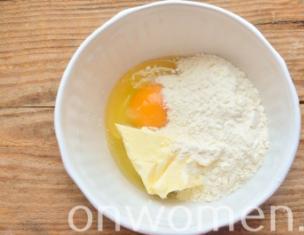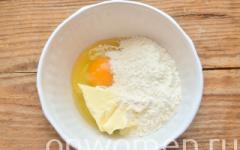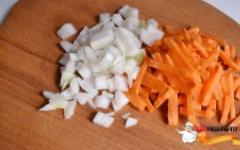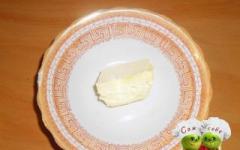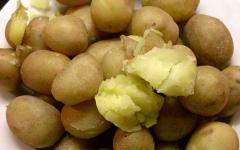Cauliflower came to Russia in the 18th century and, by virtue of its high prices, for a long time was available only to well-to-do members of the aristocracy. After breeding varieties capable of yielding good harvests in our latitudes, it became widespread. Now cauliflower is grown on almost every garden plot.
Beneficial features
Cauliflower is considered a dietary product. Included in the cauliflower fiber, more delicate in structure than white cabbage. It is easily digested, does not irritate the mucous membrane of the digestive organs, so it is recommended for patients with gastritis, peptic ulcers, liver disease and cholecystitis. Pediatricians recommend using cauliflower as a first meal for children.
Cauliflower cabbage contains a large number of vitamin C, vitamins B1, B2, PP, A, as well as calcium, potassium, phosphorus, sodium, magnesium, iron. It is rich in malic, folic, citric and pantothenic acids, pectin substances.
Regular use in food of cauliflower reduces the risk of developing prostate cancer and breast cancer.
Enzymes contained in cauliflower help cleanse the body of toxins, toxins and harmful substances. Cauliflower strengthens bone tissue, normalizes metabolism, cleanses the blood, strengthens blood vessels. Cauliflower, due to its complex and rich chemical compositionis not only useful product nutrition, but also a real drug.
Cauliflower is widely used in cooking - it is boiled, stewed, pickled, used raw, frozen.
Botanical characteristics of cauliflower
Cauliflower is an annual plant.
Root pivotal, when grown in a seedless way, reaches a depth of 60 cm. When grown through seedlings, as a result of the central root being broken, the root system becomes fibrous.
Stem short, widening to the top, with large leaves, ends with a head. At the beginning of the growing season, grassy, coarse with age.
Leaves form a powerful upright outlet with a diameter of 60 cm, height 40-70 cm. The shape of the leaves is lyre-pinnate, the first leaves are with petioles, the next ones can be sedentary. The color of leaves from light to dark green, is blue-green and even gray.
Head begins to form after the formation of rosettes of 20-30 leaves. The head is a modified inflorescence with shortened, fleshy shoots, on which fleshy buds grow, tightly pressed to each other. The color of the head can be white, cream, purple, greenish, etc. The shape of the heads is round to flat-rounded. With the observance of agricultural engineering and careful care can grow up to 2 kg in weight.
Flowering shoots - powerful, with numerous flowers, collected in a brush. Flowers often small and medium-sized, with thin pedicels. Color from white to yellow.
Fetus - multi-seeded pod, 6-8.5 cm long, of cylindrical shape.
Seeds small, round, brown color. Seed germination lasts 3-4 years.
Biological features of cauliflower
Shine. Cauliflower is a light-loving plant of a long day. Especially demanding on the light in the initial phase of development. With a long light bottom, cabbage forms heads faster, with a short one - the period of formation of the head increases, but the head turns out to be denser. In sunlight, the heads begin to crumble and lose their whiteness. To prevent this from happening, you need to break the inner leaves of the socket, covering their head.
Temperature. Cauliflower - cold-resistant plant. Seeds begin to germinate at a temperature of + 5 + 6 degrees. The optimum temperature for growing is +20 degrees, shoots will appear for 3-4 days. When the temperature drops to +12 degrees, shoots will appear later, in 10-12 days.
Cauliflower grows well and develops at + 15 + 18 degrees. Poor tolerates high temperatures. At temperatures above +25 degrees, the growth of cabbage slows down, the heads grow small and loose. Hardened seedlings withstand short-term lowering of temperature to -5 degrees, not hardened - afraid of freezing temperatures. Adult cauliflower plants tolerate a short-term decrease in temperature to -1-2 degrees, and late varieties even -4-5 degrees.
MoistureColor cabbage, like any other, is very demanding on moisture, since the root system of cabbage is located close to the soil surface. It is especially demanding on moisture during the growth of the sheet rosette and during the formation and growth of the head. Optimum soil moisture 70%, air humidity 80%. Sharp fluctuations of humidity have a bad effect on the development of plants, so watering should be regular. With insufficient watering, plant growth stops, even a short-term drought leads to a decrease in yield and deterioration of the quality of the heads. Especially bad for the development and growth of cabbage, when the low humidity of the soil and air is combined with high temperature. At temperatures above +22 degrees, the soil should always be wet. Overflows also adversely affect the plants - they can get sick and die.
The soil. Cauliflower places high demands on soil fertility and nutrition. Due to the close proximity of the roots to the surface of the soil, cabbage grows poorly in cold, moist and quickly drying soils. It grows well on light loam and sandy soils, with a high content of nutrients.
Cauliflower technology
Any predecessor for cauliflower will be any vegetables, except cruciferous vegetables. The place for cauliflower should be well lit.
Beds under the cabbage cooked in the fall. If the soil is acidic, then it is necessarily lime, since cauliflower does not grow on acidic soils. Under the digging make lime-fluff (200-400 grams per 1 square meter), or you can use dolomite flour (200-800 grams per 1 square meter). If soil liming is not required, then in the fall manure is applied to the beds (5-6 kg. Per 1 sq. Meter), under digging.
In the spring, the land should not be filled with fresh manure, it is better to use compost or humus (4-5 kg. Per 1 sq. Meter). It is also necessary to add mineral fertilizers: 20-25 gr. ammonium nitrate, 25-35 gr. superphosphate and 15-20 gr. potassium salt per 1 square. meter. Cabbage is very responsive to the application of organic fertilizers and mineral elements, especially molybdenum and boron. They can be made in the preparation of the beds or used for feeding. Determine that the plant lacks boron or molybdenum, can be in appearance. The heads begin to rot, the apical points of growth die off - there is not enough boron. The leaves are deformed and the head is not formed - not enough molybdenum.
Timing. In order to get the harvest of cauliflower during the whole season, it is better to sow the crop with an interval of 2-3 weeks.
For early planting, cabbage is sown in early March (in the middle lane) and at the age of 50-60 days, cabbage is ready for planting in open ground. The first harvest will be available at the end of June. In case of early planting of cauliflower, temporary shelters should be provided in case of frosts.
For spring-summer and summer-autumn cultivation of cauliflower, the optimal age of seedlings is 40-45 days.
For early cultivation using early varieties and hybrids, and for spring-summer and summer-autumn - mid-season and late.
Sowing. Soil mixture for sowing is prepared from turf land, peat and humus, taken in equal parts and steamed. The prepared mixture is poured into drawers or pots. Or you can sow directly in the garden bed in the greenhouse. Seeds before sowing are prepared as in white cabbage (see Growing white cabbage). Seeds are sown into grooves to a depth of 1 cm., The distance between seeds is 2-3 cm., Between the grooves is 3-5 cm. The boxes are closed with a film and put in a warm place, with an air temperature of + 18 + 20 degrees. After the emergence of shoots, the film is removed, and the boxes with seedlings are transferred to a cool place (+ 7 + 8 degrees), a balcony or a greenhouse. This agrotechnical reception guarantees getting good cauliflower heads. This temperature should be maintained during the week, then the temperature should be raised to + 15 + 16 degrees at night and + 20 + 22 degrees during the day.
Pick seedlings spend 2 weeks after germination in 8x8 cm pots, deepening when planting up to cotyledon leaves.
Practice shows that cabbage is best grown in pots without picking. In pots sow 3 seeds, after germination, leave one, the strongest, the rest are removed. Sown in the garden, after sprouting, thin out, leaving a distance of 10 cm between seedlings. With thickened plantings, the seedlings will stretch and grow weak.
Care for seedlings is regular watering, loosening and feeding. Seedlings can be fed with urea (1 tbsp. Per 10 liters of water) or "Agricola" for cabbage crops (according to the instructions). Solution consumption - 2-3 liters per 1 square. meter. In the process of growing rvssady, you need to carry out 3 dressings. The first dressing is done 10-12 days after the picking, the second and third - 12-14 days after the previous one.
Quenching. 2-3 weeks before disembarking, the seedlings begin to be taught to lower temperatures and direct sunlight, bringing them out onto the street or balcony.
Transplanting. The holes in the garden make rows. Between rows 50 cm., Between plants 40 cm. In each well put 0.5 liters of humus, 2 tbsp. l wood ash and 0.5 tbsp of complex fertilizer, mix everything with the ground. Seedlings well pre-shed water. In the hole, before planting, poured 1 liter of water and planted a seedling, deepening up to the first real leaves, covered with earth, compacted.
To protect early transplanted seedlings from frost and sudden changes in temperature, cabbage can be covered with non-woven material. Shelter also protects cabbage from cruciferous flea and cabbage whitefish.
Watering. The first days of cabbage watered every day, gradually reducing watering up to 2 times a week. After each watering, the soil must be loosened to ensure air access to the roots.
Feedings. Throughout the growing season, cauliflower needs additional feeding. The first feeding is carried out in 12-14 days after landing in the ground. You can feed it with a solution of mullein (1 liter per 10 liters of water) or infusion of bird droppings (1 liter for 15 liters of water), add 1 tbsp to the bucket of the prepared solution. spoon complex fertilizer. Solution consumption - 0.5-0.7 l. for plant. The second dressing is done 2 weeks after the first one, for example, with the “Effekton” liquid fertilizer (3 tbsp. Per 10 liters of water). The third dressing is carried out in the period of tying the head, potassium sulfate. Solution consumption 1 liter per 1 plant. When growing cauliflowers, effective feeding with microelements that can be combined with the main dressings. To do this, use complex micronutrient fertilizers in the form of tablets or powders. A very good effect on sticking and growth of heads, foliar top dressing with microelements: boric acid (10 g. Per 10 l. Of water), copper sulphate (8 g. Per bucket of water), molybdenum (1 g. Per bucket of water).
Cleaning. Cauliflower is harvested as the heads ripen, selectively. Heads should be 8-12 cm in diameter. In time, not cleaned heads crumble. Cut the heads together with 3-4 leaves, they protect the head from greening and mechanical damage.
Cabbage that did not have time to completely form the head, you can grow. Plants with heads 5-7 cm in diameter and well-developed leaves are taken out together with a clod of earth and transferred to a greenhouse. Establish in the prepared furrows, 15 cm in depth, spilled by water, closely to each other and drop by drop. To grow the cabbage you need darkness, for this it is covered with a dark film or black covering material. In the greenhouse, the humidity is maintained at 85-90% and the temperature is + 4 + 5 degrees. When cold weather is warmed by sawdust or manure, a layer of 20-25 cm. By the beginning of December, full-fledged heads are formed.
Cauliflower is truly a storehouse of mineral salts, vitamins, beneficial biological substances, and people with diseases of the liver and gastrointestinal tract eat cauliflower simply because of its low fiber content.The nutritional advantages of cauliflower exceeds the heading: twice as rich as protein, two or three times ascorbic acid (vitamin C). It exceeds the heading and the content of alkaline mineral salts, which is very important with excessive consumption of protein foods. Due to the fine cellular structure, cauliflower is absorbed by the body more completely than other cabbages.
Cauliflower is a very demanding plant. To get a good head, you must have at least 20-25 large leaves on the plant. Particular attention should be paid to regular watering of plants that love moist soil and do not tolerate drought. A three-four-day lack of lags in the period of tying heads leads to the fact that the heads will turn out to be of poor quality, small, will immediately crumble. Therefore, during the growing period, the cauliflower is watered with a full rate (10-20 l per 1 sq. M) 4 ~ 5 times. In addition, plants need regular refreshing watering.
After watering when the soil dries out, it should be loosened immediately. Between the plants in the row loosening should be carried out at a shallow depth so as not to damage the roots and timely destroy the weeds. Two weeks after planting, the plants spud.
Many of the dacha farmers grow cauliflower in greenhouses, which contributes to the early harvest. However, the early harvest of this vegetable can be obtained without greenhouses, for this purpose choose the early varieties of cabbage: Skorospelka, Movir, Early Gribovskaya 1355.
Read: 203
Cauliflower comes from wild species found in the Mediterranean regions of Western Europe and North Africa. Initially, culture gained popularity in Germany, Holland and Denmark, and then was imported to Russia.
Head cauliflower and the leaves can be eaten fresh, stewed, boiled and fried. For long storage cauliflower You can freeze, brew and preserve.
Growing cauliflower in central Russia, in areas of Siberia and the northern areas is produced by seedling.
GARDENING COUNCIL.Cauliflower contains 5% sugars, 4% protein, 100 mg of vitamin C, 1.6% carotene, and also vitamins of group B (B 1, B 2), vitamin PP, salts of sodium, calcium, magnesium, iodine, iron, phosphorus and potassium.
The main conditions for growing cauliflower
Moisture for cauliflower
The main part of the root system of cauliflower is located at a depth of about 20 cm, so the plant is very demanding of moisture and suffers greatly from its lack. In order to retain moisture in the soil, after each watering you need to loosen the earth around the plants.
Heat for cauliflower
Cauliflower - cold-resistant culture. For normal growth temperature is enough for it (16-20 ° С). Adult plants tolerate short-term lowering of temperature to (-2 ° C). If the air temperature is a long time (10 ° C) or higher (25 ° C), the yield of the plant and the taste of the cabbage are greatly reduced.
Soil for cauliflower
For growing cauliflower any type of soil is suitable with a pH of 7. Good yield can be obtained on heavy, fertile, medium loamy soils or black soil.
Good cauliflower precursors on the garden plot are legumes, cucumbers, onions, potatoes, beets, tomatoes and perennial herbs.
Bad predecessors, after which it is impossible to plant cauliflower- These are cruciferous vegetables.
GARDEN TIP.Cauliflower heads shade from the sun, otherwise they may turn yellow, turn brown and quickly turn to flowering.
Cauliflower is desirable to grow as a first or second crop after applying organic fertilizers. At the same place cabbage can be grown no more 2-3 years, because during this time in the soil accumulate pathogens and harmful substances. Under the autumn digging, 4-6 kg of compost or rotted manure, 20-30 g of double superphosphate and 20 g of potassium sulfate are introduced into the soil per 1 m 2. In the spring, when digging into the soil per 1 m 2 add 20 g of ammonium nitrate or urea.
Growing cauliflower seedlings
 Culture can grow seedlings, landing in two stages: spring-summer and summer-autumn. Spring sowing of seeds for seedlings is carried out from 10 to 20 March. Cauliflower seedlings recommended to grow in peat pots, planting seeds into the soil to a depth of 0.5 cm. The crops are mulched with dry sand, then the soil is compacted and watered with warm water. During the day, seedlings are kept indoors with a temperature (15-18 ° C), at night it is lowered (10-12 ° C). After shoots appear, they are thinned.
Culture can grow seedlings, landing in two stages: spring-summer and summer-autumn. Spring sowing of seeds for seedlings is carried out from 10 to 20 March. Cauliflower seedlings recommended to grow in peat pots, planting seeds into the soil to a depth of 0.5 cm. The crops are mulched with dry sand, then the soil is compacted and watered with warm water. During the day, seedlings are kept indoors with a temperature (15-18 ° C), at night it is lowered (10-12 ° C). After shoots appear, they are thinned.
Care for cauliflower seedlings
Cauliflower seedlings are fed with organic and mineral fertilizers. After 2-3 true leaves appear on the seedlings, fertilizing is carried out by dissolving 5 g of ammonium nitrate or 15 g of potassium nitrate in 10 l of water. You can also use a mixture of 1.5 g of urea, 40 g of superphosphate and 10 g of potassium chloride, dissolving it in 10 liters of water. Cauliflower seedlings are watered rarely, but plentifully. 2 weeks before planting plants in open ground, they begin to carry out for pouring.
Planting cauliflower seedlings
Ready to plant cauliflower seedlings must have 5-6 of these leaves. Planted it in open ground at the age of 40-50 days in the period from 1 to 10 June. The distance between the rows should be 50 cm, and between plants - 30 cm. After planting, the seedlings are watered.
Cauliflower care
Cauliflower care consists in regular watering, top dressing, loosening of the soil and extermination of wreckers. 2 weeks after the cabbage is planted in open ground, fertilizing with bird droppings is carried out (1 part of fertilizer per 15 parts of water). Can be used for feeding the slurry (1 part fertilizer to 10 parts of water with the addition of 1 tablespoon of complex fertilizer). The following feeding is carried out in 5-7 days after the first. At 1 m 2 of area, pour 1 cup of wood ash, then hilling is carried out to a depth of 5 cm and the plants are poured with a nutrient solution (1 tablespoon of nitrophoska per 10 liters of water).
GARDENING COUNCIL.A peculiarity of cauliflower is the annual development cycle, in which in the very first year of the growing season a head is formed, consisting of numerous shoots with small flower buds. After the growth of cauliflower formed elongated seed shoots with yellow flowers, collected in the brush.
Cauliflower is demanding on soil fertility and fertilization. On acidic and alkaline soils, the point of cabbage growth is deformed, with a lack of boron, the inflorescences become terry, and dense brown spots appear on the heads. With a lack of copper on the leaves chlorosis is formed, with molybdenum starvation the leaf plate becomes thinner. The lack of magnesium leads to the disintegration of the heads.
 Cauliflower harvest
Cauliflower harvest
Harvesting cauliflower conduct selectively, since the maturation of the heads does not occur simultaneously. During the cleaning head must be left 3-4 real sheet to protect the edible part from contamination and damage.
Plants of the third sowing period, who did not have time to form heads by the end of the harvesting period, can be grown in a warm room. To do this, select plants with well-developed leaves and heads with a diameter of at least 5 cm, dig them up with a clod of earth and transfer them to greenhouses or greenhouses, buried in the soil. You can grow cauliflower in the dark.
Fine( 5
)
poorly  (0
)
(0
)
TOOLS REQUIRED
BucketWaterRakeComplex fertilizerWatering canShovelThe soilHoeBox for seedlings
Expand
Cauliflower demanding sunlight
Temperature. For ripening and achieving technical ripeness of cauliflower harvest, at least 120-160 is necessary warm days, depending on the variety. It would seem that the summer period of the middle band is quite enough for this. But the complexity of growing this type of cabbage lies in the fact that it reacts very sensitively to temperature fluctuations, therefore, a lot of effort is required to protect the landings during cold snaps and the shading of the beds from the scorching sun.
Place of landing. Cauliflower is demanding of sunlight. Good, dense heads are tied only when grown in open, highly lighted areas. Even close proximity to tall garden crops can negatively affect the quality of the crop.
Tip! Towards the middle of summer, when the inflorescences begin to form and mature, break down upper leaves head and “priteenite” them head - so it will remain white, will not turn yellow and will not crumble.
The best cauliflower precursors: potatoes, cucumbers, tomatoes, beets, as well as peas and other legumes. It is not planted after “related” crops, such as radishes, turnips, radish and other types of cabbage, after which pathogenic bacteria and fungal spores can remain in the soil.
The soil. Heavy, clay or poor soils for growing cauliflower are not suitable. These plantings yield a crop on sandy garden soil, sufficiently drained with good circulation of moisture and air. To improve the nutritional value of cabbage beds, it is better to use organic fertilizers: rotted manure or mullein, humus, compost mass, non-acidic peat.
Roller growing tips
Humidity. Regular watering cauliflower planting is necessary, especially in the early stages of cultivation. But at the same time, the stagnation of water in the soil is often the main cause of the development of fungal diseases, so the frequency and volume of irrigation are determined depending on weather conditions and the amount of precipitation. As a rule, in the second half of the summer, when the crop ripens, the cabbage is no longer watered.
Cauliflower plantings for full development and high-quality ripening of the crop requires regular feeding. A rather long growing season gradually depletes the soil, and the culture at different stages requires additional micro-macroelements.

If you doubt the nutritional value of the soil, it will not be superfluous to feed the cauliflower a third time.
The first feeding is carried out about ten days after the transplanting, or by the time when there are 5-6 real leaves on the sockets. To do this, use a liquid organic - infusion of mullein, bird droppings or herbal infusion added to the water for irrigation in appropriate dosages.
Two weeks later, a second feeding is carried out, already with the addition of mineral fertilizers: an infusion of wood ash, bone meal or a finished complex preparation - nitroammofoski.
If you doubt the nutritional value of the soil, it will not be superfluous to feed the cauliflower a third time, at the beginning of the formation of the head.
Video about cabbage planting and care
Growing most varieties of cauliflower is often complicated by the fact that the quality of the future crop is negatively affected by temperature fluctuations. It is bad for her and possible cold snaps below 10 ° C, and hot weather, when the air warms up above 26-28 ° C. During such periods, the growth and development of planting is inhibited, the density and taste of the forming heads deteriorate.

Sowing seeds for seedlings spend about a month before the estimated time of planting
Based on this, as well as taking into account the weather characteristics of a particular region, various methods of growing cauliflower are used - through seedlings, sowing in open ground or planted under temporary shelter. Consider the advantages and difficulties of each.
- Seedling method
Sowing seeds for seedlings spend about a month before the expected planting dates, usually the period from late March to mid-April. Seeds are sown in loose, wet and nutritious soil in individual cups or in a common container, deepening them by about 1-1.5 cm. Crops are covered with a piece of glass or film and put in a warm place for germination. After the emergence of shoots shelter is removed, and the capacity is transferred to the window sill, providing sockets with maximum illumination. Care of the growing seedlings is timely watering and spraying, and a week before planting it begins to harden.



